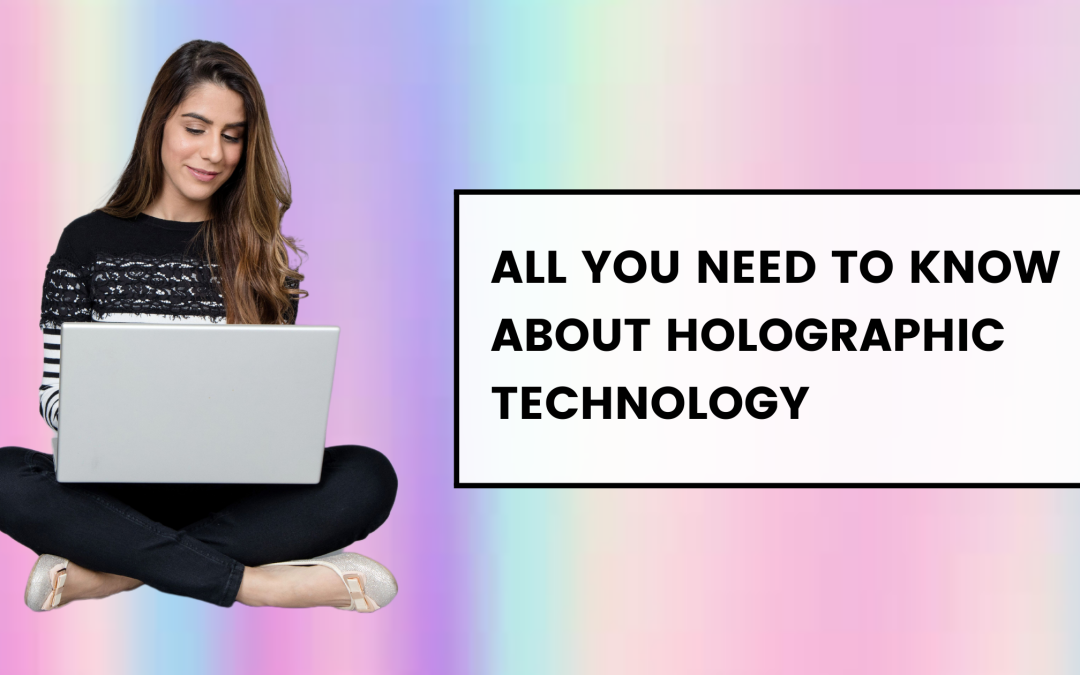What is Holographic Technology?
When we think of holograms, we typically envision a 3-D image that appears to be suspended in space. When holographic technology is used for communication purposes, it can create an illusion of a three-dimensional object. This can be used for entertainment as well as for education purposes. Have you ever seen someone’s fingers touch from the other side? That’s what holographic technology is all about!
There are many ways in which this technology is being utilized today, and our creativity knows no bounds. You might have recently heard about the Guinness World Records award for the largest hologram display. Read on to find out more about how holograms work, where they’re being used, and how they impact your daily life.
What is Holographic Technology?
Holograms are three-dimensional images that are created using laser light. The difference between a hologram and an image is that a hologram appears to be in 3-D from any angle, no matter how it is looked at.
In order to create a holographic image, you need two lasers: one that points directly onto the object you want to photograph and the other on the opposite side of the object.
You can see this technology in action by visiting a show or museum that displays holograms for entertainment purposes. But did you know that this technology has many other uses?
For example, it has been used to help doctors understand what’s happening inside their patients’ bodies during surgery. Holograms of kidney stones in an enlarged bladder allowed doctors to get a better understanding of what needed to be done and where they needed to cut. And because kidney stones come in all different shapes and sizes, medical professionals were able to get specific details about what they might be dealing with before surgery even started.
Another common use for holographic technology is education – it can be used as a way of teaching people about complicated subjects without having them go through years of schooling. For example, MIT created a program called “starlab” where students could learn about astrophysics through 3-D models shot against an expansive backdrop of space, including Earth’s orbit around the sun and distant galaxies billions of light years away. This type of learning gives students more context than they would have had
The 3-D Illusion
In order to understand holographic technology, it’s important to establish what a “hologram” is. Holograms are 3-D images that appear to be suspended in space. When people think of holograms, they typically imagine an image that looks like this.
Holographic technology can create an illusion of a three-dimensional object for communication purposes. This technology is used for entertainment and education purposes.
For example, if you put your fingers up against the screen, your fingers will seem to touch from the other side! We’ve all seen this in movies where a villain’s reflection is caught in a mirror – but now it’s possible in real life! You might have even heard about the Guinness World Records award for the largest hologram display. Read on to find out more about how holograms work, where they’re being used, and how they impact our daily lives.
How does it work?
So, how is this technology created? There are three different methods in which the hologram can be made. One way is to use a laser to create interference patterns of light waves. A second way is to use two projectors with two different pictures on them and have them bounce off of a special screen. Finally, another way is to use lasers and mirrors to recreate a 3-D image.
Each method has its own benefits and disadvantages. The first one can work without the need for a computer, but it’s difficult if you want to make large images because you would need a computer and quite a bit of time. The second method doesn’t require a computer, but it does take up more space. The third method needs the least amount of space but does require more advanced equipment than the other two methods; it also takes up less time than the first one though.
Where is it being used?
Holographic technology is being used in many different ways, which is what makes it so special. For example, you can use this technology to create a full-sized digital moving hologram in the shape of a human being. This digital hologram has been created for communication purposes and can be used for entertainment purposes as well.
Additionally, holograms are often used for education purposes. Holographic technology offers a way of displaying objects in 3 dimensions without the need for physical materials like models or dioramas. You might have seen some examples of this type of display at your local museum.
Another place where you may have seen this technology in action is at an event like a concert or conference. There are many businesses and organizations who use it to provide a more interactive experience with their audience. In this case, holographic displays can be used as backdrops on stages during live events and presentations.
These displays create a more immersive atmosphere that allows audiences to feel like they’re part of the show rather than just passively viewing it from afar.
Impact on daily life
In our world of screens and digital devices, holographic technology might seem like a novelty. But it is quickly finding its place in daily life. The most common place you’ll find holograms today is at the movies.
Holograms are now being used at theaters to create more immersive movie experiences. It’s also used for moving ad campaigns and for store window displays. You may have seen this technology when watching concerts or sporting events as well! Hologograms have been used to display the game plan on football fields to show how plays will happen or 3-D images during basketball games to illustrate how players will move around the court.
And if you’ve ever wanted to see your favorite artist in concert, don’t worry! You can catch them in hologram form too! These holograms are often projected as life-size 3D images that appear both onstage and on big screens in the audience seats. In addition, holographic technology has been used for educational purposes by creating a three dimensional replica of a human heart for medical students to study before surgery.
Conclusion
Holographic technology creates a 3-D effect from a 2-D image. It’s been used to create eye-catching displays in stores and museums, for everything from jewelry to artwork. Holograms are also used in education, medicine, and more.
Holograms are produced by lasers. The laser light is shone on a photo of an object or person, which emits a different light pattern as the light waves scatter off the surface. The pattern is recorded and then replayed to create the 3-D effect.
Holographic technology is being used in a variety of ways, and it will likely continue to advance and change the way we live in the future.


Recent Comments